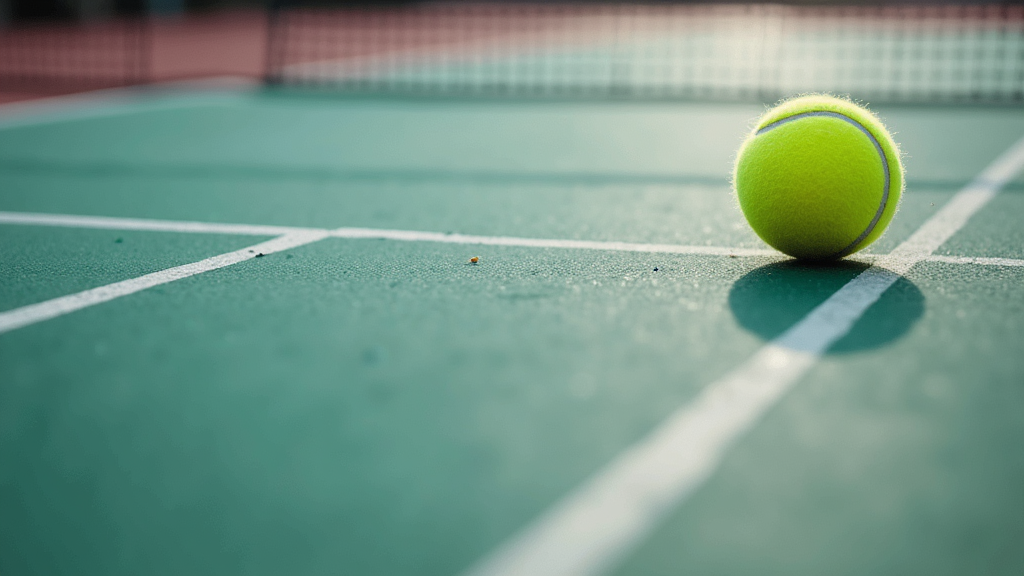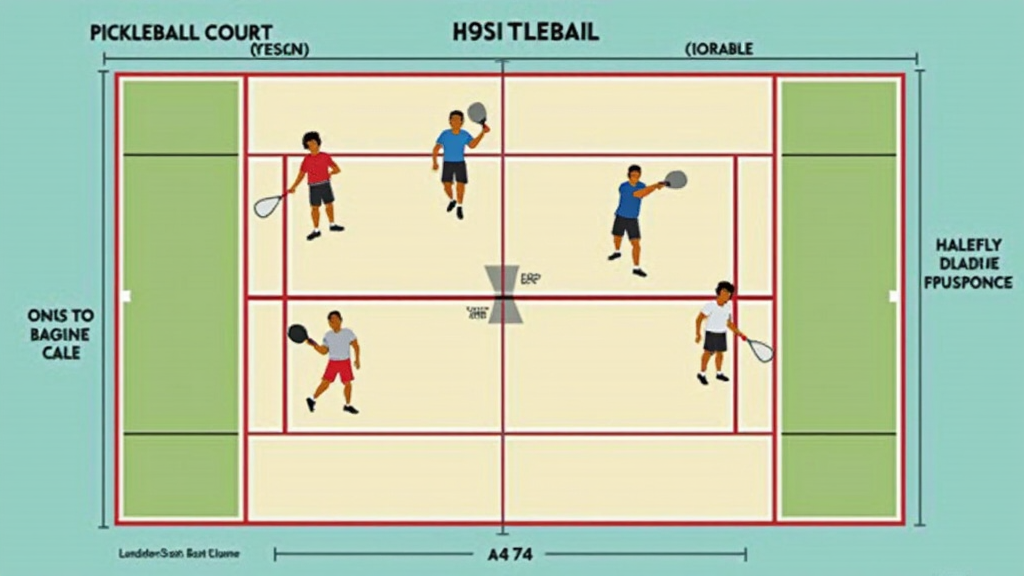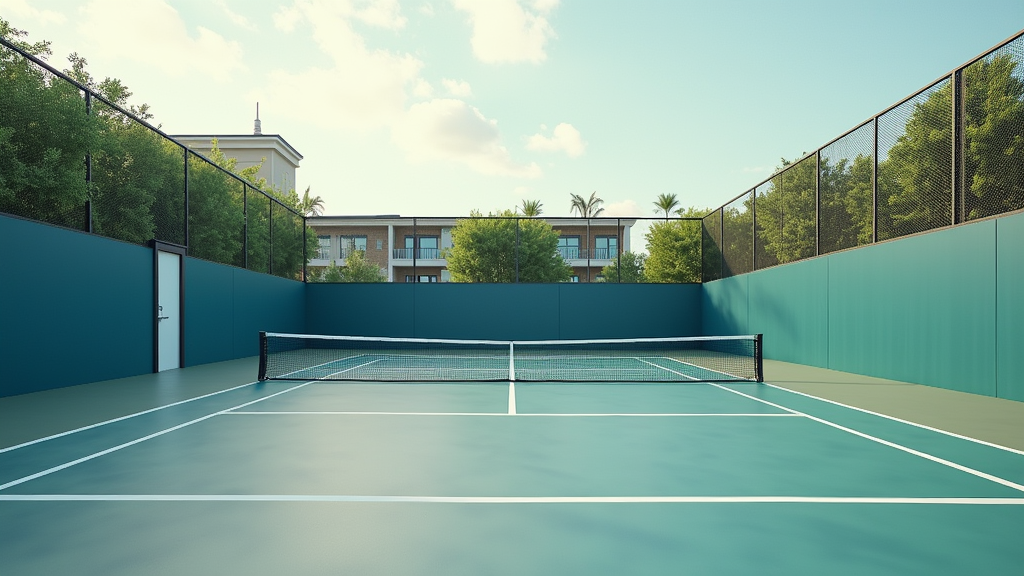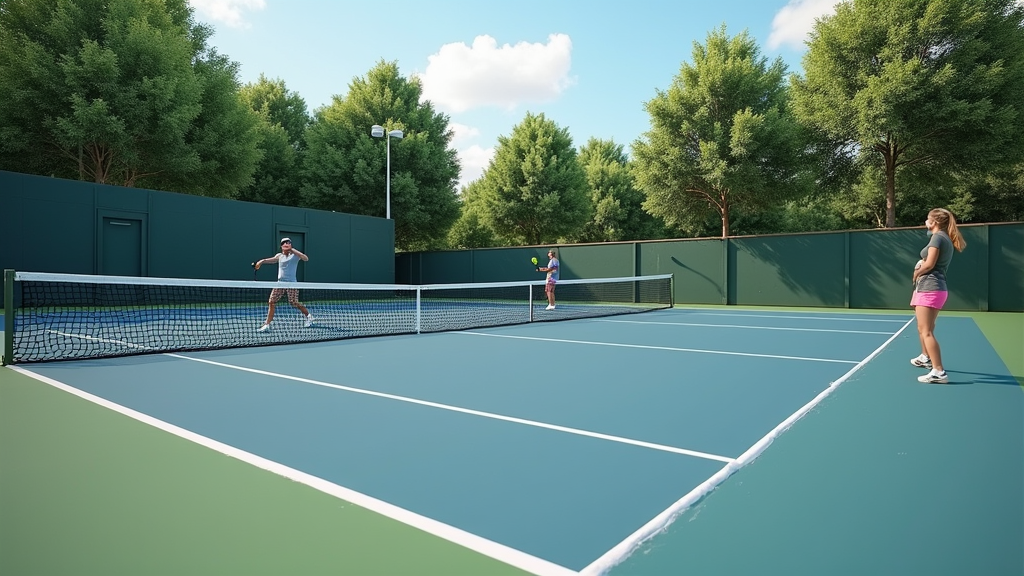Table of Contents
- Understanding Pickleball Court Orientation Outline
- Understanding Pickleball Court Orientation Outline Fundamentals
- Essential Components in a Pickleball Court Orientation Outline
- Detailed Pickleball Court Orientation Outline Guide
- Additional Factors Affecting Pickleball Court Orientation Outline
- Pickleball Court Orientation: Dimensions and Line Markings
- Pickleball Court Orientation: Net Height and Placement
- Environmental Factors in Pickleball Court Orientation
- Safety and Comfort Factors for Pickleball Court Orientation
- Pickleball Court Orientation: Dual-Use and Temporary Setups
- Professional and Player Considerations for Court Orientation
- Pickleball Court Orientation Outline: Final Thoughts
Understanding Pickleball Court Orientation Outline

Why Proper Pickleball Court Orientation Matters
Pickleball court orientation plays a pivotal role in the overall gameplay and enjoyment of the sport. The direction a court faces significantly impacts factors like sun glare and wind interference, directly affecting player visibility and performance. The USAPA (USA Pickleball Association) provides guidelines for optimal court orientation, especially for outdoor facilities, to minimize these environmental challenges. Studies show that proper court orientation can reduce sun glare by as much as 70%, leading to a more comfortable and fair playing experience. Ultimately, correct orientation enhances visibility, fairness, and, most importantly, player safety.
Historical Perspective on Pickleball Court Layout
In the early days of pickleball, courts were frequently adapted from existing surfaces like tennis courts or driveways, with little consideration given to optimal orientation. These makeshift courts often suffered from poor visibility due to sun glare or were heavily affected by wind. However, as pickleball’s popularity has surged, modern court construction now prioritizes optimal orientation to enhance the playing experience. We’ve seen the emergence of dedicated pickleball facilities specifically designed with the sun’s path and prevailing wind conditions in mind.
Key Takeaways: Mastering Court Orientation
This guide will equip you with the knowledge to understand the core concepts of pickleball court orientation, including the significant impact of sun and wind on the game. You’ll learn practical applications for orienting a new court or adapting an existing one to maximize playability. We’ll also cover best practices for minimizing the effects of environmental factors, ensuring a more enjoyable and competitive pickleball experience for everyone.
Understanding Pickleball Court Orientation Outline Fundamentals
Key Definitions for Pickleball Court Orientation
When planning a pickleball court, understanding a few key definitions is crucial. Court orientation refers to the direction the court faces in relation to North, South, East, and West. Sun glare is direct or reflected sunlight that can impair a player’s vision. Finally, wind interference describes how wind affects the ball’s flight path.
Core Principles of Effective Court Orientation
Several core principles guide effective pickleball court orientation. The primary goal is to minimize sun glare and shadows that can affect visibility. It’s also important to account for the prevailing wind direction, as wind can significantly alter gameplay. Ultimately, prioritize player comfort and safety when determining court orientation.
Essential Components in a Pickleball Court Orientation Outline

Required Elements for Pickleball Court Construction
A functional pickleball court requires several essential elements. First, you’ll need a flat, rectangular surface. Then, install a net with the correct height (36 inches at the sidelines and 34 inches at the center). Finally, ensure the court has clearly marked lines, including baselines, sidelines, non-volley lines, and service lines.
Primary Features: Court Dimensions and Surface
The primary features to consider are the court dimensions and surface material. Standard pickleball court dimensions are 20 feet wide by 44 feet long. The surface material can be asphalt, concrete, or specialized acrylic court surfaces, each offering different levels of playability and maintenance.
Secondary Features: Fencing and Lighting Considerations
Secondary features can enhance the playing experience. Fencing or windscreens can reduce wind interference, improving gameplay. Lighting is essential for evening play, allowing for extended court use.
Important Variations: Indoor vs. Outdoor Pickleball Courts
Important variations exist between indoor and outdoor courts, as well as temporary and permanent setups. Indoor courts eliminate weather-related challenges, while outdoor courts require careful orientation planning. Temporary setups might use portable nets and taped lines, whereas permanent courts involve more robust construction.
Detailed Pickleball Court Orientation Outline Guide
Preparation for Optimal Pickleball Court Orientation Outline
Proper preparation is crucial for ensuring the best possible pickleball playing experience. This involves gathering the necessary materials, conducting an initial site assessment, and considering various environmental and logistical factors.
- Required materials:
- Initial setup:
- Important considerations:
- Compass or GPS device for accurate direction finding.
- Site plan or aerial view to understand the location’s layout.
- Consultation with experienced court builders is highly recommended.
- Determine the ideal north-south axis as precisely as possible.
- Assess existing environmental factors such as sun exposure, wind direction, and shade patterns.
- Local climate and typical weather patterns that may affect play.
- Proximity to residential areas to minimize noise-related disturbances.
- Budget constraints and available space for the court and surrounding amenities.
Step-by-Step Pickleball Court Orientation Outline Process
This section provides clear, actionable instructions for correctly orienting your pickleball court. Following these steps will help minimize environmental impact and maximize player comfort.
- Clear instructions:
- Best practices:
- Common mistakes to avoid:
- Consult with pickleball organizations or experienced court builders for tailored advice.
- Use windscreens strategically to block intense sunlight and reduce glare.
- Incorporate landscaping to reduce noise and enhance the playing environment.
- Ignoring the impact of sun glare on player visibility, especially during sunrise and sunset.
- Overlooking the prevailing wind direction, which can affect ball trajectory.
- Failing to account for future development or changes in the surrounding environment that may impact the court.
Advanced Pickleball Court Orientation Outline Techniques
For those seeking to optimize their pickleball court orientation further, these advanced techniques offer expert-level insights and solutions for common challenges.
- Expert tips:
- Optimization methods:
- Troubleshooting:
- Use specialized software to simulate sun and shadow patterns throughout the year.
- Consider the angle of the sun at different times of the year to minimize glare.
- Optimize the court surface color to reduce glare and improve visibility.
- Install windscreens to block sunlight and wind, creating a more comfortable playing environment.
- Use strategic landscaping to provide shade during peak sun hours and reduce noise pollution.
- Adjust the court orientation slightly to account for specific local conditions and environmental factors.
- Excessive glare:Add windscreens or adjust the court orientation slightly to minimize direct sunlight.
- Wind interference:Install windscreens to block the wind or consider relocating the court to a less exposed area.
- Noise complaints:Implement noise reduction measures such as berms or landscaping to absorb sound.
Additional Factors Affecting Pickleball Court Orientation Outline

Pickleball Court Orientation: Dimensions and Line Markings
Standard pickleball courts measure 20 feet wide by 44 feet long (6.1 meters by 13.41 meters). Understanding these dimensions is crucial for proper court layout and orientation.
The non-volley zone, often called the kitchen, extends 7 feet (2.13 meters) from the net on both sides. This area impacts strategic play and must be accurately marked.
Essential lines include baselines, sidelines, non-volley lines, and service courts. Precise marking ensures fair play and adherence to regulations.
The standard line width for all court markings is 2 inches (5.08 cm). Consistent line width enhances visibility and professionalism.
Pickleball Court Orientation: Net Height and Placement
The net height is a critical factor. It should measure 36 inches (0.914 meters) at the sidelines and 34 inches (0.864 meters) at the center.
Ensuring the net is properly tensioned and securely fastened is essential for consistent gameplay and safety. A sagging or loose net can affect ball trajectory.
Environmental Factors in Pickleball Court Orientation
Sun position significantly impacts player visibility. Orient courts to minimize direct sunlight in players’ eyes, especially during peak playing hours.
Wind direction also plays a key role. Ideally, orient courts perpendicular to the prevailing winds to ensure fair gameplay and minimize wind interference.
Consider nearby shade and potential obstacles that could affect visibility or player movement. Strategic placement can enhance player comfort and safety.
Safety and Comfort Factors for Pickleball Court Orientation
Maintaining a clean, debris-free playing surface is paramount for player safety and prevents injuries. Regular maintenance is essential.
Consider installing windscreens to reduce wind interference and court lighting for evening play. These additions can significantly improve the playing experience.
Adequate shading is highly recommended for player comfort and safety, especially in warmer climates. Shade structures or natural shade can prevent overheating.
Pickleball Court Orientation: Dual-Use and Temporary Setups
Existing tennis courts can be adapted for pickleball. A single tennis court can accommodate one pickleball court comfortably.
Two tennis courts can fit two pickleball courts, and four tennis courts can accommodate four pickleball courts, although spacing might be tighter.
For temporary court setups, use portable nets, removable lines, and pre-made court kits. These options provide flexibility and ease of setup.
Sidewalk chalk, tape, or high-contrast masking tape can effectively mark lines for temporary courts. Choose materials that are visible and safe.
Consider dual-purpose setups by lowering tennis nets to the pickleball height. This allows for easy transition between sports.
Professional and Player Considerations for Court Orientation
Incorporate player preferences and feedback regarding court orientation to optimize the playing experience. Player input is invaluable.
Adhere to industry standards and recommendations for optimal playing conditions. This ensures consistency and fairness.
Seek advice from experienced court builders or pickleball organizations when necessary. Professional guidance can prevent costly mistakes and ensure a high-quality court.
Pickleball Court Orientation Outline: Final Thoughts
Recap of Optimal Pickleball Court Orientation Factors
Proper pickleball court orientation is crucial for visibility, comfort, and fair play.
By carefully considering factors like sun glare and wind direction, players can ensure a more enjoyable and competitive experience.
A north-south orientation is generally recommended to minimize the impact of direct sunlight, reducing glare for players on both sides of the net.
Remember that environmental conditions like prevailing wind, shading from nearby trees or buildings, and even seasonal changes can influence the ideal orientation for your pickleball court.
Essential Considerations for Pickleball Court Orientation
When planning your pickleball court orientation outline, always prioritize player safety and comfort.
A well-oriented court contributes significantly to a positive playing environment.
Consulting with experienced court designers and construction professionals can provide valuable insights and ensure that all relevant factors are considered during the planning and building phases.
They can offer tailored solutions based on your specific location and playing conditions.
Maintaining Your Pickleball Court Orientation Investment
After establishing your pickleball court orientation, regular maintenance is key to preserving its quality and playability.
This includes keeping the court surface clean and free of debris, addressing any cracks or imperfections promptly, and ensuring that the net and other equipment are in good working order.
Proper maintenance not only extends the lifespan of your court but also ensures a safe and enjoyable playing experience for everyone.

